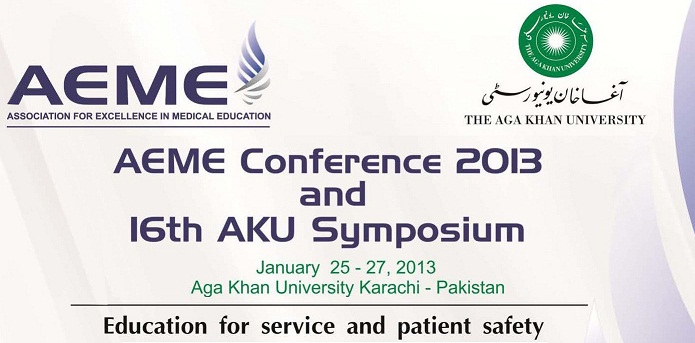Day 1 : Poster Presentations (Theme: Patient Safety)
Neonatal sepsis following prolonged rupture of membranes in a tertiary care hospital of Karachi
Location
Auditorium Pond Side
Start Date
26-1-2013 10:30 AM
Abstract
Background: Prolonged rupture of membrane (PROM) is an important modifiable risk factor for early onset neonatal sepsis (EONS) and associated with increase morbidity and neonatal mortality. We determine the incidence and PROM associated risk factors for culture proven EONS from the developing country. Methods: We retrospectively reviewed medical records of all neonates born at Aga Khan University Hospital, Karachi over a period of 5 years (2007-2011) with PROM (>18 hours). Data was collected on maternal and neonatal risk factors for EONS. Adjusted logistic regression analysis was applied to assess the risk factor of culture proven EONS.
Results: Incidence of PROM in this neonatal birth cohort was 2.7/100 live birth. A total of 17 (4%) cases with blood culture proven bacterial sepsis were identified within 72 hr of birth. Klebsiella pneumonia (29.4%) and Pseudomonas aeruginosa (23.5%) were the commonest isolates followed by Group B streptococcus (n=3; 18%) and Escherichia coli (n=2; 12%). Maternal fever (p 48 hrs. (p
Conclusions: Our data describes PROM associated risk factors for culture proven EONS in Karachi. Preventive measures should focus at recognition of these high-risk infants with prompt laboratory screening for sepsis and early institution of empirical antibiotic. Such approach would have been a safe and cost-effective strategy especially in developing countries.
Key words: Neonatal sepsis; prolonged rupture of membranes; blood culture; preterm
Neonatal sepsis following prolonged rupture of membranes in a tertiary care hospital of Karachi
Auditorium Pond Side
Background: Prolonged rupture of membrane (PROM) is an important modifiable risk factor for early onset neonatal sepsis (EONS) and associated with increase morbidity and neonatal mortality. We determine the incidence and PROM associated risk factors for culture proven EONS from the developing country. Methods: We retrospectively reviewed medical records of all neonates born at Aga Khan University Hospital, Karachi over a period of 5 years (2007-2011) with PROM (>18 hours). Data was collected on maternal and neonatal risk factors for EONS. Adjusted logistic regression analysis was applied to assess the risk factor of culture proven EONS.
Results: Incidence of PROM in this neonatal birth cohort was 2.7/100 live birth. A total of 17 (4%) cases with blood culture proven bacterial sepsis were identified within 72 hr of birth. Klebsiella pneumonia (29.4%) and Pseudomonas aeruginosa (23.5%) were the commonest isolates followed by Group B streptococcus (n=3; 18%) and Escherichia coli (n=2; 12%). Maternal fever (p 48 hrs. (p
Conclusions: Our data describes PROM associated risk factors for culture proven EONS in Karachi. Preventive measures should focus at recognition of these high-risk infants with prompt laboratory screening for sepsis and early institution of empirical antibiotic. Such approach would have been a safe and cost-effective strategy especially in developing countries.
Key words: Neonatal sepsis; prolonged rupture of membranes; blood culture; preterm

